In a surprising turn of events, a federal judge has blocked the Bureau of Alcohol, Tobacco, Firearms, and Explosives (ATF) from enforcing the proposed ban on pistol braces. This decision comes as a relief to firearm owners who had been anxiously anticipating the outcome of the proposal. But what does this mean for the future of pistol braces and the broader gun control debate?
The proposed ban would have required owners of firearms with pistol braces to register them with the ATF as short-barreled rifles. This move would have significantly restricted the use and ownership of these popular accessories, which are widely used by gun enthusiasts for increased stability and control.
Because the ban was blocked nationwide, the ATF has opened up the possibility for ongoing discussions and assessments of the regulations surrounding pistol braces. This decision represents a win for firearm owners who have been rallying against overreaching government control.
While the future of pistol braces remains uncertain, this latest development highlights the significance of public opinion and advocacy in shaping firearm regulations. As the debate continues, gun owners and enthusiasts are eager to see how this decision will impact their rights and the broader firearms landscape.
Overview of pistol braces and their use in firearms
Pistol braces are accessories designed to improve the stability and control of pistols. They attach to the rear of the firearm and provide additional support, allowing the shooter to brace the weapon against their forearm. This helps to reduce recoil and increase accuracy, especially when firing rapidly or with one hand.
The popularity of pistol braces has grown significantly in recent years, as more firearm owners discover their benefits. Many gun enthusiasts enjoy the versatility they offer, as pistol braces allow them to shoot pistols comfortably and accurately, mimicking the stability of a rifle. Furthermore, these accessories have proven to be particularly helpful for individuals with physical limitations or disabilities, enabling them to handle firearms with greater ease.
The potential impact of the proposed ban on firearm owners
The proposed ban on pistol braces would have had far-reaching consequences for firearm owners across the country. If implemented, it would have required individuals who own firearms with pistol braces to register them with the ATF as short-barreled rifles. This classification comes with additional regulations and restrictions, including the payment of a $200 tax stamp.
For many firearm owners, the proposed ban represented an infringement on their rights and an unnecessary burden. The increased restrictions would have limited their ability to enjoy their firearms and exercise their Second Amendment rights. Additionally, the financial implications of registering each pistol brace as a short-barreled rifle would have been significant, placing an unfair burden on law-abiding citizens.

Reaction from the firearm community and advocacy groups
The firearm community and advocacy groups have been vocal in their opposition to the proposed ban on pistol braces. Upon hearing the news of the judge’s decision to block the ban, there was a collective sigh of relief among gun owners and enthusiasts.
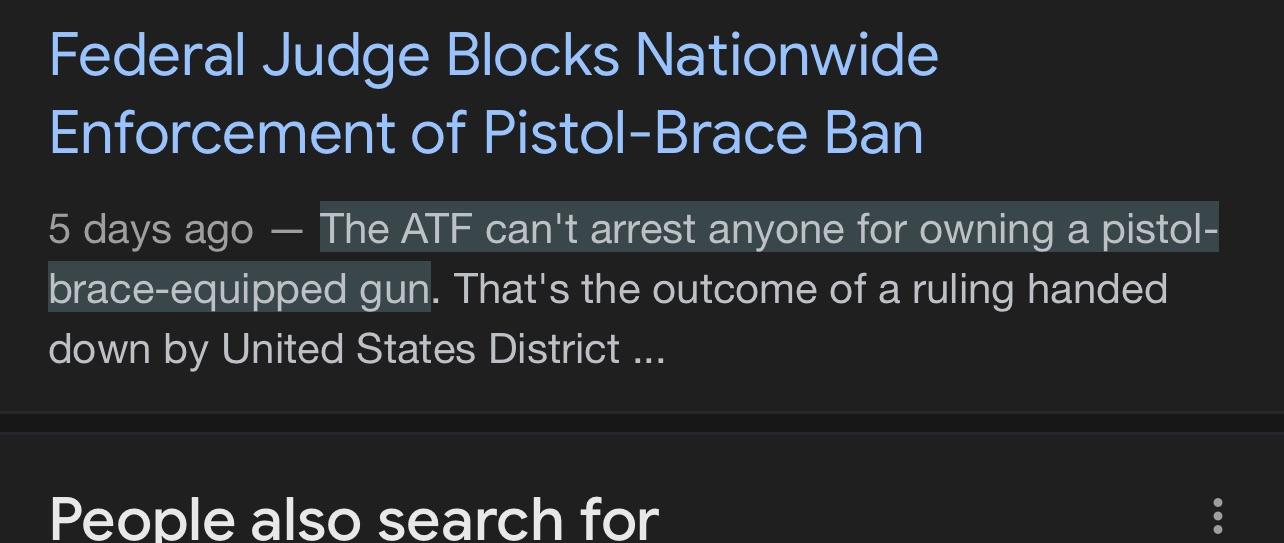
Organizations such as the National Rifle Association (NRA) and the Gun Owners of America (GOA) have been at the forefront of the fight against the ban. They have argued that pistol braces are not inherently dangerous and that law-abiding citizens should not be penalized for using accessories that improve firearm stability and control.
Legal implications and challenges to the proposed ban
The proposed ban on pistol braces would have undoubtedly faced legal challenges had it been implemented. Critics argue that the ATF does not have the authority to regulate accessories like pistol braces without the proper legislative backing.
Furthermore, legal challenges would have likely arisen from firearm owners who believe that the ban infringes upon their Second Amendment rights. The right to bear arms includes the right to choose accessories that enhance firearm performance and safety, as long as they are used responsibly.
The ATF’s reasoning behind the proposed ban
The ATF’s reasoning behind the proposed ban on pistol braces was primarily based on the classification of these accessories as shoulder stocks. According to the National Firearms Act (NFA), firearms with a barrel length less than 16 inches and a shoulder stock are classified as short-barreled rifles, which require registration and a tax stamp.
The ATF argued that the design and use of pistol braces allowed them to be easily shouldered, effectively transforming pistols into short-barreled rifles. They believed that this shouldering capability made pistol braces subject to the same regulations as shoulder stocks.

Alternatives and solutions for firearm owners affected by the ban
While the proposed ban has been blocked, firearm owners who were concerned about its potential impact can still explore alternatives and solutions. One option is to consider other accessories that provide similar stability and control, such as foregrips or bipods.
Additionally, firearm owners can stay informed about future developments and engage in the ongoing discussions and assessments of pistol brace regulations. Being proactive in advocating for responsible firearm ownership and participating in organizations that protect Second Amendment rights can also help ensure that the rights of firearm owners are respected.
Resources and support for firearm owners navigating the proposed ban
For firearm owners who were uncertain about how to navigate the proposed ban, various resources and support networks were available. Organizations like the NRA and the GOA provide information and guidance on firearm laws and regulations, as well as updates on legislative developments.
Additionally, online communities and forums dedicated to firearms and Second Amendment rights can offer valuable insights and support. Engaging with like-minded individuals who share similar concerns and challenges can provide a sense of community and help firearm owners navigate the complexities of firearm regulations.
Updates and developments on the status of the proposed ban
As the decision to block the proposed ban on pistol braces is still recent, there will likely be updates and developments in the coming months. It is essential for firearm owners to stay informed about any new regulations or proposals that may impact their rights and the legality of pistol braces.
Monitoring legislative activities and engaging with elected officials can help ensure that firearm owners have a voice in shaping firearm regulations that are fair and reasonable. Participating in public comment periods and contacting representatives to express concerns or support can have a significant impact on the outcome of proposed regulations.

Are Pistol Braces Legal?
Because a judge has blocked the proposed ban on pistol braces, it means that, at least for the time being, the ban is not in effect. However, this doesn’t necessarily mean that pistol braces are permanently deemed legal. The judge’s decision may be subject to further legal proceedings, and the situation could change based on appeals or subsequent legal actions.
It’s crucial to stay updated on the specific details of the judge’s ruling, any potential appeals, and any subsequent developments in the legal landscape. Always consult legal professionals or official sources for the most accurate and current information regarding the legality of pistol braces in your jurisdiction. Laws and regulations can be complex and subject to change, so it’s essential to obtain information from reliable and up-to-date sources.
Conclusion: What firearm owners can do to stay informed and engaged in the fight against the proposed ban
The decision to block the proposed ban on pistol braces is undoubtedly a victory for firearm owners. However, it is crucial for firearm owners to remain vigilant and engaged in the fight for their Second Amendment rights.
Staying informed about firearm regulations, participating in advocacy groups, and engaging with elected officials are all essential steps in protecting the rights of firearm owners. By working together and advocating for responsible firearm ownership, firearm enthusiasts can continue to enjoy the benefits of accessories like pistol braces while ensuring public safety.
In conclusion, the decision to block the proposed ban on pistol braces represents a significant win for firearm owners and advocates. The ongoing debates and discussions surrounding pistol brace regulations serve as a reminder of the importance of public opinion and advocacy in shaping firearm regulations. By remaining informed and engaged, firearm owners can continue to protect their rights and contribute to a responsible and balanced approach to gun control.
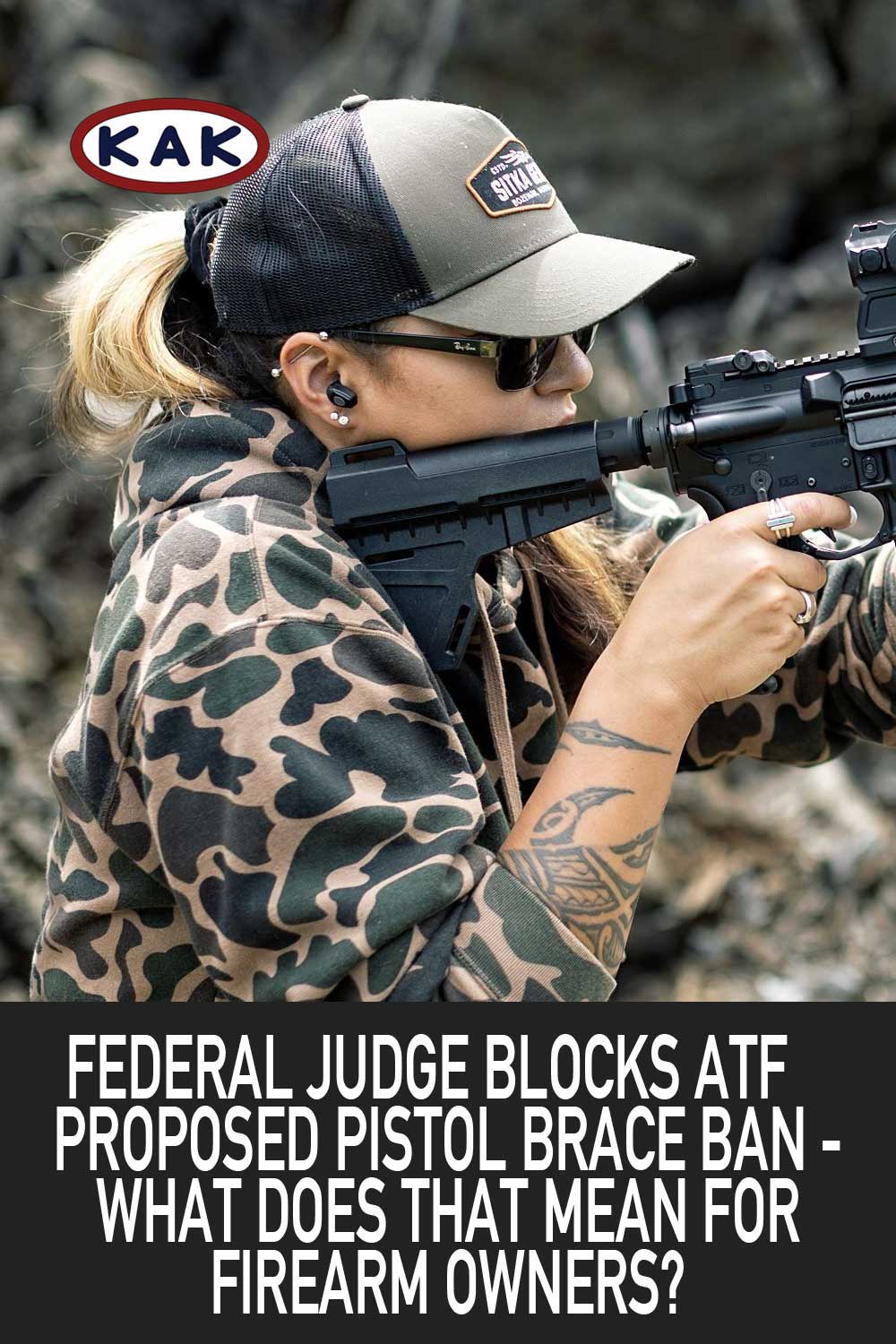


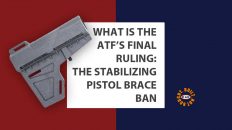
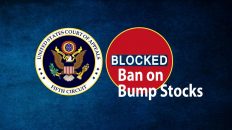
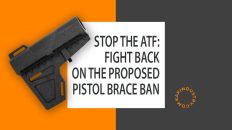
Add comment